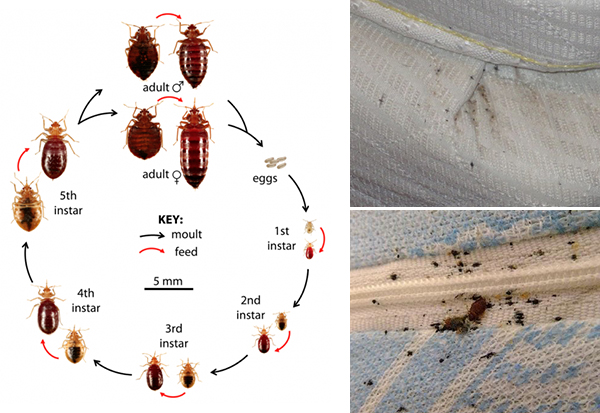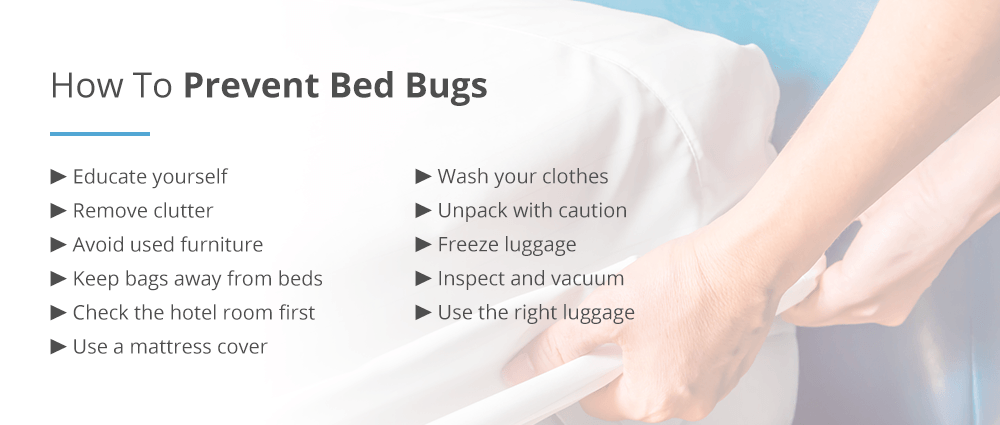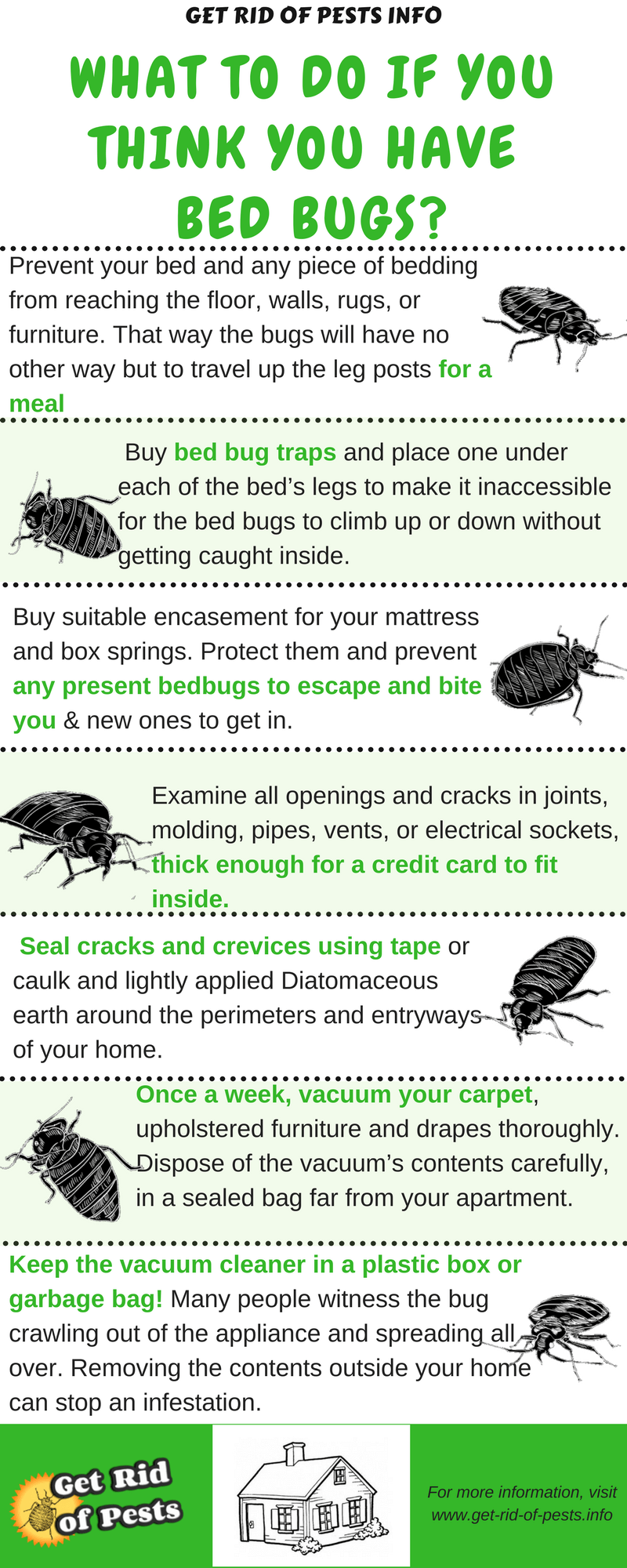To prevent bed bugs from entering your apartment, seal any cracks, use mattress and box spring encasements, and declutter regularly. Keep your living space clean and inspect second-hand furniture carefully for any signs of infestation.
Vacuum often, wash bedding frequently in hot water, and use a protective barrier around your bed legs. Preventing bed bugs is essential for maintaining a healthy living environment and avoiding costly treatments. Implement these preventative measures to keep your apartment bed bug-free and enjoy peace of mind knowing you’ve taken proactive steps to protect your home.

Credit: www.domyown.com
Identifying Bed Bugs
To prevent bed bugs from entering your apartment, be proactive in identifying them. Regularly inspect your bedding, furniture, and cracks in walls for signs of bed bugs. Implement preventive measures like using mattress encasements and reducing clutter to deter bed bugs from infesting your living space.
Physical Characteristics
Bed bugs are small, flat insects that are a reddish-brown color. They are about the size of an apple seed, typically measuring around 4-5 mm in length. These pests have oval-shaped bodies with a distinct segmented appearance. Bed bugs possess six legs, which allow them to move quickly through various surfaces, including fabric and wood. While they do not have wings, bed bugs can crawl at an impressive speed of up to 4 feet per minute. These critters are also nocturnal and tend to hide during the day, making them difficult to spot.Signs Of Infestation
Detecting a bed bug infestation early is crucial in preventing further spreading and treating the problem effectively. Here are some signs that indicate the presence of bed bugs in your apartment:- Bite Marks: Bed bug bites often appear as small, itchy red bumps on the skin. These bites are usually in a linear pattern and can cause discomfort and irritation.
- Stains on Bedding: Bed bugs leave behind dark, rusty stains on sheets, pillowcases, and mattresses. These stains are a result of the bugs being crushed while feeding.
- Musty Odor: Bed bugs release a distinct, musty odor that is often described as sweet and sickly. If you notice an unusual smell in your bedroom or apartment, it could indicate a bed bug infestation.
- Visible Bugs or Eggs: Although bed bugs are skilled at hiding, you may come across adult bugs or their eggs if you inspect your bedding, furniture, or crevices thoroughly. Adult bed bugs are flat and brown in color, while eggs are tiny and white.
Preventative Measures
- Check for any signs of bed bugs like dark spots, eggs, or shed skins.
- Thoroughly inspect seams, crevices, and tufts of upholstered furniture.
- Seal cracks and crevices in walls, baseboards, and around pipes.
- Install door sweeps to close gaps at the bottom of doors.
- Use caulk to seal gaps around windows and electrical outlets.
Maintaining Cleanliness
Prevent bed bugs from entering your apartment by maintaining cleanliness. Regularly vacuum and clean all surfaces, including the bed frame and mattress. Inspect second-hand furniture carefully before bringing it into your home. Use mattress and box spring encasements to trap and contain any bed bugs that may be present.
Regular Cleaning And Vacuuming
Regular cleaning and vacuuming will help prevent bed bugs from infesting your apartment. Implement a weekly cleaning routine to eliminate potential hiding spots for bed bugs. Use a vacuum with a high-efficiency particulate air (HEPA) filter to capture bed bugs and their eggs. Pay special attention to cracks, crevices, and upholstered furniture where bed bugs may hide.Laundry And Bedding Care
Wash bedding in hot water and dry on a high heat setting to kill any bed bugs present. Regularly inspect and clean mattress seams and edges where bed bugs often hide. Encase your mattress and box spring in bed bug-proof covers to prevent infestations.By maintaining cleanliness in your apartment through regular cleaning, vacuuming, and proper laundry and bedding care, you can effectively prevent bed bugs from entering your living space.
Credit: pestech.com
Using Bed Bug Detectors
Looking to prevent bed bugs from invading your apartment? One effective method is to use bed bug detectors. These devices are designed to catch and trap bed bugs, allowing you to take preventive measures before an infestation occurs. Keep your apartment bug-free with these handy tools.
When it comes to preventing bed bugs from infesting your apartment, using bed bug detectors can be an effective strategy. Bed bug detectors are innovative tools designed to catch these pests before they become a full-blown problem. In this post, we will explore two popular types of bed bug detectors: Interceptors and Traps and Passive Monitors.
Interceptors And Traps
Interceptors and traps are devices specifically designed to intercept bed bugs as they attempt to climb onto your bed or furniture. These detectors work by creating a barrier that bed bugs cannot cross. They are usually placed under the legs of your bed or furniture, creating a trap that bed bugs will get caught in.
Interceptors and traps are an affordable and easy-to-use solution to detect and monitor bed bug activity in your apartment. They provide an early warning system that allows you to take immediate action and prevent a full-blown infestation. Additionally, using interceptors and traps can help you identify the extent of the infestation and track the effectiveness of your bed bug treatment.
Passive Monitors
Passive monitors are another type of bed bug detector that can be highly effective in preventing infestations. These monitors work by using attractants, such as carbon dioxide or heat, to lure bed bugs into a sticky surface. Once the bed bugs come into contact with the sticky surface, they become trapped and cannot escape.
Passive monitors are a discreet and non-intrusive solution to detect bed bugs in your apartment. They can be placed near your bed, furniture, or other areas where bed bugs are likely to hide. The advantage of passive monitors is that they do not require any power source or maintenance, making them a convenient option for long-term monitoring.
In conclusion, using bed bug detectors can play a vital role in preventing bed bugs from infesting your apartment. By utilizing interceptors and traps or passive monitors, you can quickly detect bed bug activity and take prompt action. Remember, early detection is key to avoiding a full-blown infestation and the potential health risks associated with bed bugs.
Traveling Precautions
`inspecting Hotel Rooms`
`When staying in a hotel, it’s crucial to inspect your room for any signs of bed bugs as soon as you arrive. Start by putting your luggage in the bathroom or on a luggage rack away from the bed, as these are the most common places bed bugs are found. Next, pull back the sheets and inspect the seams, crevices, and any dark spots on the mattress and box springs. Look behind the headboard and any pictures hanging on the wall as well, as these areas are also appealing hiding spots for bed bugs. Check for live bugs, eggs, or shed skins, which are all indicators of an infestation. If you suspect a problem, alert the hotel staff immediately and request a different room or consider finding a new hotel altogether.
`packing And Unpacking Tips`
`When it comes to packing and unpacking, it’s essential to take strategic measures to minimize the risk of bringing bed bugs into your home. Use hard-shell luggage rather than fabric, as it is harder for bed bugs to penetrate. Consider packing clothes in sealable plastic bags or in packing cubes that can be easily laundered after your trip. While unpacking, it’s important to inspect your belongings carefully and avoid placing items directly on the bed or upholstered furniture. Instead, opt to unpack on a hard surface such as a table or dresser to minimize the chances of transferring any potential bed bugs from your luggage into your living space.
Professional Inspection And Treatment
Preventing bed bugs from infesting your apartment requires attention to detail and proactive measures. Professional inspection and treatment play a critical role in keeping these pests at bay. Here’s what you need to know to effectively safeguard your living space.
When To Seek Professional Help
Recognizing the signs of a potential bed bug infestation is crucial. If you notice:
- Bite marks on your skin upon waking up
- Small reddish-brown spots on bedding or furniture
- Distinctive musty odor in your apartment
It’s time to consult a professional exterminator for a thorough inspection.
Treatment Options
When it comes to addressing bed bug infestations, professional exterminators offer several treatment options:
- Heat Treatment: Exposing the living space to high temperatures effectively eliminates bed bugs and their eggs.
- Chemical Treatments: The use of specially formulated pesticides can eradicate bed bugs while ensuring the safety of your living environment.
- Steam Treatment: Employing high-temperature steam is another effective method for targeting bed bugs, particularly in hard-to-reach areas.
Professional exterminators assess the extent of the infestation and recommend the most suitable treatment approach to ensure comprehensive eradication.
Educating Neighbors And Landlords
Discover effective strategies for keeping bed bugs out of your apartment by educating neighbors and landlords. Learn preventative measures to safeguard your living space and minimize the risk of bed bug infestations. Stay informed and proactive to maintain a pest-free environment.
Informing Surrounding Units
Educating your neighbors about the importance of bed bug prevention is crucial in maintaining a pest-free environment in your apartment complex. By spreading awareness about the risks, everyone can take necessary precautions together. Follow these steps to inform your surrounding units:
- Knock on your neighbors’ doors and kindly explain the situation.
- Give them a leaflet or flyer highlighting the signs of a bed bug infestation and preventive measures.
- Encourage them to regularly inspect their furniture, bedding, and clothing for any signs of bed bugs.
- Emphasize the importance of immediate action if they suspect an infestation and suggest professional pest control services.
Engaging With Property Management
Your landlord or property management is a key player in preventing the spread of bed bugs. Engage with them using the following strategies:
- Arrange a meeting with your landlord or property management team to discuss the issue.
- Politely request routine inspections of each unit in the complex to identify and address any potential infestations.
- Suggest implementing a proactive bed bug prevention program, such as regular pest control treatments for the entire building.
- Ask your landlord to provide educational materials, such as pamphlets or newsletters, to inform tenants about bed bug prevention and the importance of reporting infestations promptly.
- Request that your landlord or property management team promptly address any reported cases of bed bugs and arrange professional treatment to eliminate the infestation.
Creating A Response Plan
When it comes to preventing bed bugs from invading your apartment, creating a response plan is key. Being prepared and knowing how to react can make a significant difference in effectively dealing with a potential infestation.
Steps To Take If Infestation Is Suspected:
- Seek visual confirmation by checking for typical signs of bed bugs, such as rusty spots on bedding.
- Immediately isolate any potentially infested items to prevent further spread.
- Thoroughly clean and vacuum the suspected areas to reduce the chances of bed bugs multiplying.
- Contact a professional pest control service to assess and address the situation promptly.
Seeking Support And Assistance:
- Inform your landlord or property management as soon as possible if you suspect a bed bug infestation.
- Collaborate with neighbors to determine if the issue is isolated or widespread across the building.
- Seek guidance from your local health department or exterminators for expert advice and assistance.
- Follow any recommendations or treatment plans provided by professionals to eradicate the infestation effectively.

Credit: medium.com
Frequently Asked Questions Of How To Prevent Bed Bugs From Getting Into Your Apartment?
How Can I Prevent Bed Bugs In My Apartment?
To prevent bed bugs, regularly vacuum your apartment, wash bedding in hot water, and seal cracks and crevices. Also, consider using mattress encasements and inspect secondhand furniture before bringing it into your home.
What Are Common Signs Of Bed Bugs In An Apartment?
Common signs of bed bugs include itchy red welts on the skin, small blood stains on bedding, and dark spots on mattresses or furniture. Additionally, you may notice a musty odor in the infested areas.
Can Bed Bugs Be Brought Into An Apartment Unknowingly?
Yes, bed bugs can hitch a ride on luggage, clothing, or secondhand furniture, allowing them to be unknowingly brought into an apartment. It’s important to inspect these items before bringing them inside to prevent an infestation.
Should I Contact A Professional For Bed Bug Treatment?
If you suspect a bed bug infestation in your apartment, it’s best to contact a professional pest control service. They have the expertise and tools to effectively eliminate the infestation and prevent future issues.
Conclusion
To protect your apartment from bed bugs, implementing regular inspections, practicing cleanliness, and being vigilant are crucial. By vacuuming regularly, washing bedding in hot water, and sealing cracks and crevices, you can significantly reduce the risk of bed bug infestations.
Additionally, if you do suspect a bed bug problem, act swiftly by contacting professional pest control services. With these preventive measures in place, you can maintain a bed bug-free living space and enjoy a peaceful night’s sleep.
Related posts:

I’m MD Tanvir, and I bring years of expertise gained from working closely with pest control companies to the forefront. My journey in the industry has inspired me to launch Bug Battler, a platform aimed at equipping people with the know-how to combat pests autonomously. Through Bug Battler, I aim to empower individuals with practical insights to tackle pest infestations effectively.

